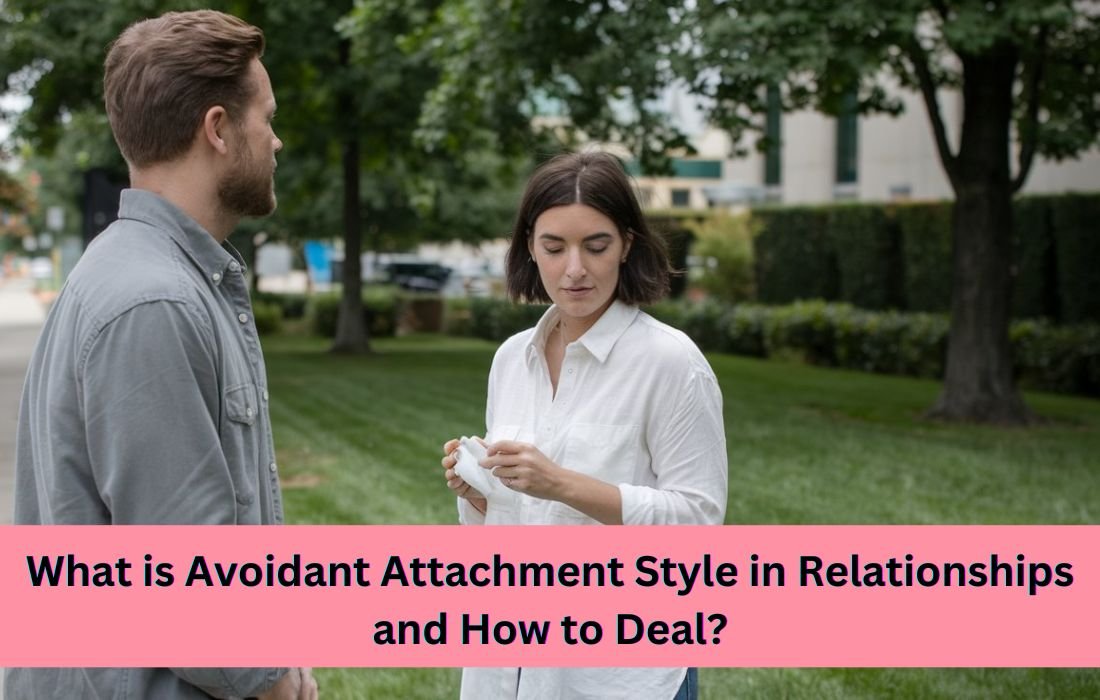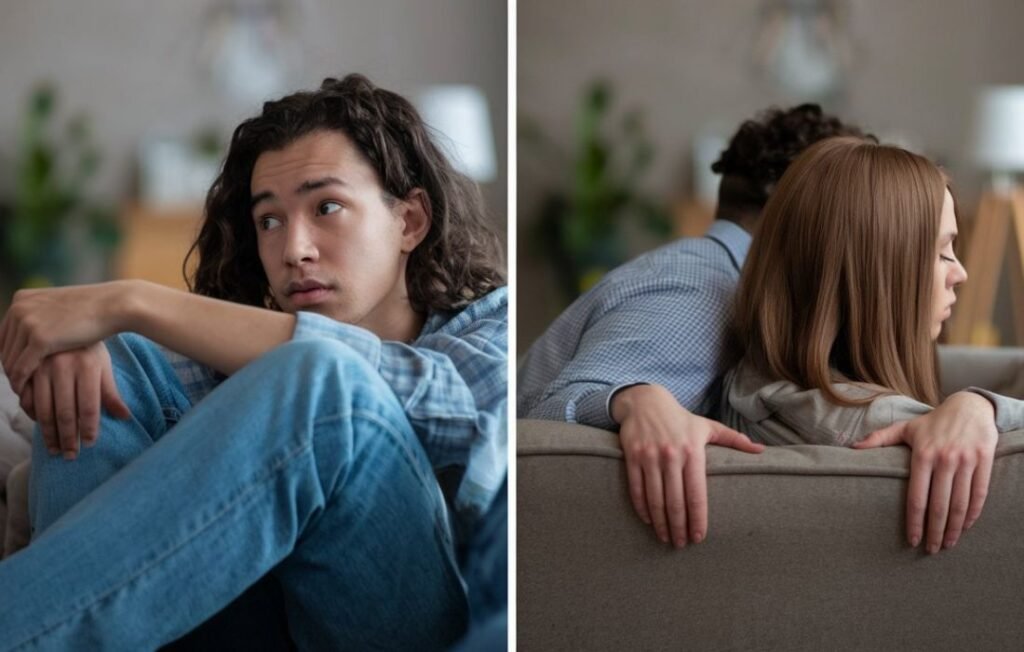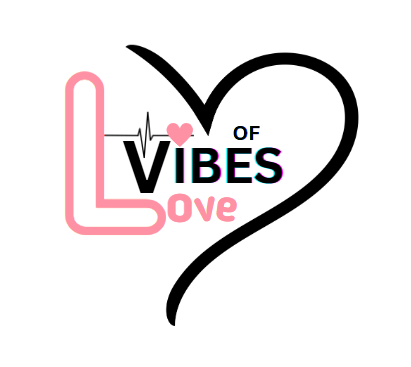
The avoidant attachment style in relationships – does it really affects relationships and how? Many of the times these questions haunt you.
Am I right?
In many cases you have seen, some people keep their distance, even in close relationships.
Trust me, people with the avoidant attachment style are not emotionless. They just tend to suppress negative feelings.
There are so many reasons why people have avoidant attachment. One of the reasons is early childhood experiences with caregivers.
Let’s talk about avoidant attachment style and how to deal it with in detail.
So, don’t miss the end.
What is avoidant attachment style in relationships?
The avoidant attachment style takes shape in the early years of life. This occurs when a caregiver does not meet the child’s emotional needs.

Children learn that expressing emotions will not help them feel better. Over time, they begin to suppress or deny their feelings.
As a result, they will have a dependency on self and distance others.
Types of avoidant attachment style
Basically, there are two types of avoidant attachment style. These are dismissive avoidant attachment style and fearful avoidant attachment style
1. Dismissive avoidant attachment:
This attachment style often comes out from birth. Kids with dismissive-avoidant tendencies do not feel sad when the parents leave.
And when their parent’s return at home, they stay away. Sometimes they avoid much affection. They are generally comfortable on their own.
These are very independent people who, most of the time, prioritize work over relationships. They pull back when others become overly emotional.
They prefer solitude and do not invest much in deep emotional bonds.
The dismissive-avoidant types require securely attached partners. But they face much difficulty when attached to the anxious attachment types.
They feel emotionally drained and makes their relationship more challenging.
2. Fearful avoidant attachment:
Actually, fearful attachment style is the rarest type, and it comes in a pretty specific way.
These types of people are always confused about closeness in a relationship.
They want connection but are afraid of it. Thus, they pull people closer and push them away from themselves. This makes their behavior unpredictable for others.

Here’s the difference between the Dismissive Avoidant and Fearful Avoidant attachment styles
| Aspect | Dismissive Avoidant | Fearful Avoidant |
|---|---|---|
| General Approach to Relationships | Cold, distant, values independence, resists closeness | Mixed feelings about closeness, warm initially but withdraws later |
| Initial Reaction to Others | Often appears emotionally distant and unresponsive | Warm, people-pleasing, attuned to others’ |
| Need for Alone Time | Naturally prefers alone time, expects understanding | Needs alone time when frustrated or angry |
| Response to Criticism | Hurt deeply by direct criticism | Sometimes become cold when criticized |
| Emotional Expression | Struggles to express emotions, and focuses on thoughts | More expressive of emotions, though needs can go unexpressed |
| Boundaries | Set clear boundaries | Weak boundaries, often self-sacrificing until overwhelmed |
| Trust in Others | Limited trust | Deep-seated trust issues, fear of betrayal |
| Dependency | Prefers self-reliance, avoids emotional dependency | Can swing between independence and neediness |
| Reaction to Rejection | Often indifferent or deflective | Withdraws, especially if core wounds are triggered |
| Coping Mechanisms | Engages in private coping mechanisms like work, TV, or hobbies | Similar use of coping mechanisms for comfort and security |
| Reaction to Emotional Vulnerability | Avoids vulnerability due to negative associations | Both craves and fears vulnerability, struggles with consistency |
| Self-View and Worth | Self-worth tied to independence | Feels guilt and shame around hurting others. They are so sensitive to rejection |
| Relationship Dynamics | Maintains distance | Unpredictable patterns |
| Connection Needs | Low need for close emotional connection | Desires closeness but fears it, creates push-pull dynamics |
Signs of avoidant attachment in relationships

1. Shame in expressing emotions:
People with avoidant attachment style cannot express their emotions openly. They do not feel at ease with displaying internally what they actually feel.
They are too busy trying to control and suppress their emotions which in turn results in frustration.
2. Core belief of being unworthy of love:
These people carry a core belief of being unworthy in love. This is due to their past experiences.
And because these painful experiences they push away those who genuinely care for them.
They feel what if I get so close to someone, they will also hurt me. Therefore, it gets difficult for them to accept and receive the love.
3. Superficial relationships:
Avoidant attachment people avoid deeper relationships. They enjoy social life, but they usually have few close friends.
They protect themselves from emotional risks. As a result, they face loneliness.
4. Fear of criticism in social settings:
These people are so worried about how people see them. They have a fear of judgement.
That is why, sometimes these people prevent going out to social events altogether.
Sometimes they want to connect with other people but chooses being isolated.
5. Fear of closeness:
Fear of closeness is the sign of avoidant attachment style. These people avoid intimate relationships.
Because of this fear, these people fail to form emotional connection with partner. They choose to stay guarded.
6. Commitment phobic:
As you know without commitment relationships don’t works longer. But these people have a fear of being hurt therefore, usually they form causal relationship with others.
They do not get emotionally attached to others.
7. Prefers work over relationship:
Avoidant attachment style personalities prioritize work over relationships. They immerse themselves in their careers.
They ignore partner’s needs and desires. In doing so, they forget that they have other things to do in life rather than only career.
Anxious vs avoidant attachment in relationships:
Let’s talk about the two most common attachment styles, anxious attachment and avoidant attachment.
Each person has a different attachment style that comes along with it.

We will explain what anxious and avoidant attachment styles are, how they affect relationships, and what you can do if you or your partner identifies with one of these styles.
| Aspect | Anxious Attachment | Avoidant Attachment |
|---|---|---|
| Core Fear | Worries about being abandoned or unloved | Fears losing independence or being too close |
| Need for Reassurance | Frequently asks for reassurance from their partner | Likes to keep a distance and be self-reliant |
| Trust Issues | Has trouble trusting partners and doubts their love | Finds it hard to trust others and keeps emotional distance |
| Emotional Dependency | Relies heavily on their partner for emotional support | Values independence and may avoid emotional closeness |
| Response to Conflict | Gets anxious and wants to fix problems quickly | Tends to withdraw or avoid dealing with conflicts |
| Clinginess | Can be clingy or overly attached to their partner | Avoids being clingy and may feel suffocated by demands |
| Communication Style | Often shares their needs and feelings openly | Struggles to express feelings and may shut down |
| Perception of Intimacy | Wants closeness but fears it might lead to loss | Values personal space and sees intimacy as a threat |
| Overthinking | Overanalyzes their partner’s actions and intentions | Downplays issues and minimizes problems |
| Impact on Relationships | Can lead to emotional ups and downs | May create distance and lack of closeness |
What causes avoidant attachment in relationships?

1. Childhood experiences:
Childhood experiences like growing up your parents wasn’t emotionally available whenever you need. This kind of unworthiness feeling makes people avoidant.
As a result, these children suppress their feelings. When these children become adults, they struggle to express their feelings in relationships.
They feel unsafe and emotionally disconnected with their partner.
2. Past relationship traumas:
Past painful relationship experiences drain your energy like heartbreak, breakup and betrayal.
For instance, in past relationship your boyfriend cheated on you for another girl as a result you lose trust.
These beliefs and fears can make it hard for them to form deep, trusting bonds with new partners.
Therefore, they create a wall to protect their emotions.
3. High value on independence:
Many people with an avoidant attachment style are independent. They believe if they become dependent on someone will make them weak.
Because of this kind of mindset, they focus more on their own needs and goals rather than relationship.
4. Cultural background:
Cultural background shapes how we view relationships and emotional connections. In some cultures, self- independence is highly valued at a very little age.
For instance, in European countries at the age of 18 teenagers are encouraged to be independent.
That is why you will see a lot of divorce cases in Europe as compared to India. In India, cultural and social factors place a high value on the stability of marriage.
They encourage couples to work through difficulties rather than dissolution of marriage.
Therefore, these cultural differences influence how people approach relationships and commitment.
5. Family environment:
Family environment also impacts life like how you connect with others.
A loving, supportive family helps children feel safe and open with emotions. But a tense, critical, or distant family can create the opposite effect.
These children grow up believing that emotions are best kept hidden. This environment can lead to an avoidant attachment style, where they prefer to handle problems alone.
How to deal with avoidant attachment in relationships?
This avoidant attachment style influences 25-30% of the general population in their relationships.
Let just discuss how you can deal with avoidant attachment partner.

1. Understand their attachment style:
There are two types of avoidant attachment style in relationships. Firstly, identify your partners attachment style.
What are its signs and causes. Try to find it by observing their behaviors.
For instance, pay attention to how your partner communicates their feelings. Do they avoid deep conversations? Do they seem uncomfortable discussing their emotions?
Notice how your partner responds when you initiate intimacy.
Additionally, ask your partner about their past relationships. Do they have a pattern of short-lived romances.
2. Approach communication gently:
Choose a private and calm place where both of you can talk without distractions.
Talk to your partner about their feelings and needs. You can do this by sharing your own feelings first. Then, automatically they become comfortable with you.
Once they become comfortable, they will share their feelings with you. While having conversation, you have to be empathetic.
Show them that you care about them and respects their feelings.
For instance, you can say, “I know that talking about feelings can be tough for you, and that’s okay. I’m here to listen whenever you feel ready to share”
3. Make them feel safe:
Practice staying present with others emotionally. Listen to them carefully.
Maintain eye contact. Allow discussions to unfold naturally without a strict timeframe.
Just sit close to your partner, hold their hand, and make them feel more secure.
If possible, schedule regular conversations. Set aside time to discuss how did you spend your day?
These little actions and conversations will make them feel safe in relationship.
4. Set healthy boundaries:
You cannot be available all the time for others. Set some healthy boundaries. Give some space to your partner to retain their individuality.
Make sure you respect each other’s boundaries. If your partner says, I need some time for myself. Give them little space.
5. Celebrate small wins:
When you celebrate little victories, it will boost both your confidence and your partner’s. Therefore, do not forget to celebrate small wins also.
It cultivates a positive mindset in your relationship.
Appreciate each other for achievements. You can say, things like, “I’m so proud of you for completing that project. Your hard work really inspires me.
Conclusion
Avoidant attachment plays a strong role in your relationships. People with this attachment type usually create distance from people.
Key aspects of avoidant attachment:
1. Shame in expressing emotions:
They are never ready to open up and therefore are frustrated when others don’t understand what they feel like.
2. Core belief of unworthiness:
Sometimes, they run off people because of certain pain in their past.
3. Superficial relationships:
They do not form deep emotional bond with people.
4. Fear of judgment:
They are worried about being judged, and mostly keep away from social engagements or remain reserved.
5. Fear of intimacy:
They maintain a safe distance from their partner because intimacy bothers them.
6. Commitment phobic:
Inability to commit in relationships, with more attractions to casual attachment.
7. Work over relationship:
Focusing more on the workplace than relationships.
Key takeaways for healing avoidant attachment:
1.Identify attachment style: Identify the signs of avoidant attachment in yourself or your partner.
2. Gentle communication: Approach conversations with empathy.
3. Build emotional safety: Practice staying present with others emotionally. Listen to them carefully.
4. Set healthy boundaries: Set some healthy boundaries as well as give some space to your partner to retain their individuality.
5. Celebrate small wins: When you celebrate little victories, it will boost both your confidence and your partner’s. Therefore, do not forget to celebrate small wins also.
“Was this helpful”? Share with your friends!”



